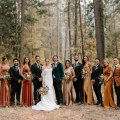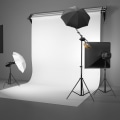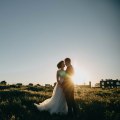Creating the perfect lighting for a photoshoot is essential for capturing stunning images. But, with so many different types of lighting, it can be difficult to know where to start. This article will give you the information you need to understand the different types of lighting and how best to use them for your photoshoots. From the most basic lighting tips, to more advanced techniques, you’ll have the knowledge you need to capture beautiful photos every time.
Read on to learn more about lighting tips for photoshoots!When it comes to lighting, there are two main types: natural light and artificial light. Natural light is the most common type of light used in photography as it is free and readily available. Natural light can be used in many different ways such as through window light or outdoor light. Artificial light, on the other hand, is created through the use of flashlights, studio lights, and other light sources.
When using artificial light, it is important to understand the different types of light sources and how to use them correctly. When selecting the right lighting for your photoshoot, it is important to consider the type of photo you want to create. For example, if you are shooting a portrait or fashion shoot, then you may want to use softer lighting such as window light or softbox lighting. However, if you are shooting something like a landscape or product shot, then you may want to use a harder light source such as a strobe or LED light. When setting up your lights, it is important to be aware of how the light is hitting your subject.
This includes understanding the angles of your lights and where the shadows will fall. It is also important to consider the color temperature of your lights and how they will affect the colors in your photos. In addition to understanding the basics of lighting, there are some other tips that can help you get the most out of your photoshoot. These include using reflectors and diffusers to modify the light, experimenting with different camera angles, and using props and backdrops to create interesting photos. Finally, it is important to remember that lighting is an art form and that practice makes perfect.
Experiment with different lighting setups and don’t be afraid to try something new!
Using Natural Light
Natural LightWhen shooting with natural light, it is important to understand how natural light works and how to use it effectively. When using natural light, it is important to pay attention to where the sun is in relation to your subject as this will affect how your photos will turn out. For example, when shooting with window light, it is important to consider the position of the sun and angle of the window so that you can create the perfect lighting for your photoshoot. Outdoor lighting can also be used to create stunning photos. The key is to use the time of day to your advantage.For instance, early morning and late afternoon are often the best times for outdoor shoots as the natural light is softer and more flattering. Additionally, it is important to keep an eye on the weather and take advantage of overcast days as this can create an even softer light. When using natural light, it is also important to pay attention to shadows. Strong shadows can distract from a photo, so you should make sure that you adjust your angle and position in order to avoid any harsh shadows.
Experimenting With Different Angles
Experimenting with different angles can help you create unique photos. Different camera angles can make a big difference in how your photos look, so don't be afraid to experiment with different angles.A few examples of angles to consider include shooting from above, shooting from below, shooting from the side, and shooting from a distance. Each of these angles can provide a unique perspective and make your photos more interesting. Shooting from above can give your photos a bird's eye view and can be great for capturing large groups of people or scenes with a lot of activity. Shooting from below can give your photos an interesting angle and can be used to create dramatic shots. Shooting from the side can add dimension to your photos and create an interesting composition.
Finally, shooting from a distance can capture a wider area and provide an overview of the scene. When experimenting with different angles, make sure to consider the lighting conditions as well. Different angles may require different lighting techniques to capture the best photo.
Using Artificial Light
When using artificial light, it is important to understand the different types of light sources and how they work. Different types of artificial lights include strobes, LED lights, and studio lights. Each type of light provides a different type of illumination and quality of light.It is important to be aware of the positioning and angle of your lights as well as the quality of light that is being produced. When setting up your lights, it is important to be aware of how the light is hitting your subject and what colors you want in your photos. Different types of lights have different color temperatures and can produce different hues of light. It is important to experiment with different lighting setups to find the right combination for your photoshoot. Another important aspect to consider when using artificial light is the intensity of the light. The intensity of the light will determine how much illumination is being produced and how bright or dark the photo will be.
It is important to adjust the intensity of the light to get the desired results. Finally, it is important to be aware of the shadows that are being cast by your lights. Shadows can add depth and texture to your photos and can help create a more dynamic image. Experimenting with different shadows can help you find the right balance for your photos. Lighting plays an important role in any photoshoot and understanding the basics can help you get the most out of your shoot. Natural light, artificial light and experimenting with different angles are all important components of successful photography.
Don't be afraid to practice and experiment with different lighting setups and angles to capture stunning photos!Lighting tips for photoshoots, natural light, artificial light, experimenting with different angles.




